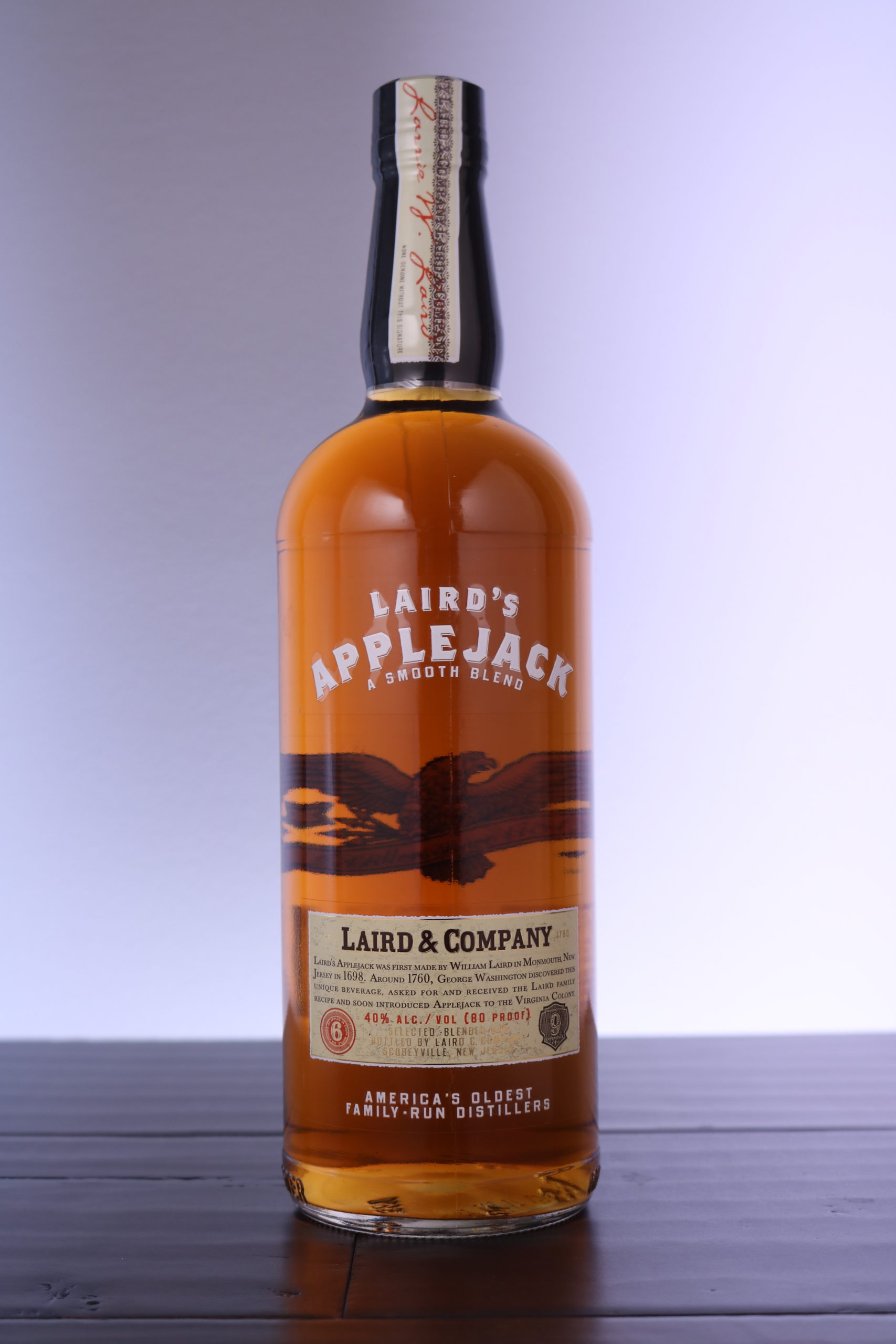When the original settlers came to America, there wasn’t a lot of options to quench their thirst. Vineyards tended not to do well (thanks to climate and soil), barley and hops hadn’t been mastered in the new world, and imported spirits were wildly comparative when available. What was available though, was apples. Always the resourceful settlers, colonial American’s soon realized that apples could be frozen, leaving behind an unrefined but highly alcoholic residue. Soon after the discovery, a Scottish immigrant by the name of William Laird began refining the substance and aging it in oak to create an apple brandy. Enter Laird’s Blended Applejack.
Applejack was big in the United States for years, and resulted in the creation of several cocktails, notably the Jack Rose and Pink Lady. One of the things that first drew me to Applejack and the Jack Rose was the delightful book Boozehound by Jason Wilson. In it, Wilson describes the Jack Mauve (named due to the homemade grenadine on a Jack Rose), which left me hooked on the idea of homemade grenadine, lime, and applejack.
I only had one problem with finding all these things. I was flying every week and living out of a suitcase. If you want to torture yourself while flying, reading a book about obscure cocktail ingredients on an airplane. Nevertheless, I made a bee line for the liquor store and found a bottle of Laird’s Blended Applejack so I could make my own.
Laird’s Blended Applejack
Laird’s Blended Applejack is not straight applejack. Instead it’s blended with neutral grain spirits. This isn’t designed to be a straight sipping applejack. So how is Laird’s Blended Applejack?
Sight: An amber-brown hue in the glass.
Smell: The nose is full of apples with hints of caramel and oak. The apple notes range between cider like and freshly peeled. There’s a certain tartness as well.
Sip: The palate carries a smooth baked apple flavor that’s heavily influenced by oak notes and hints of vanilla and caramel. There’s a certain tea / tannic like note on the finish that pulls in additional cigar box like spicing. It also burns a bit.
Savor: The ending is more apple skin like and carries through oak and spice with a hint of bitterness.
The overall impression of Laird’s Blended Applejack is enjoyable and tasty, if unrefined. It’s far from perfect, but certainly more than serviceable for cocktails.
Laird’s Blended Applejack in Cocktails
Come fall and early winter, few spirits play as well with fresh apple as Laird’s Applejack. Unsurprisingly the apple notes tend to amplify, and work well as a canvas for warm sugars – like maple syrup or cinnamon simple. Due to this, it also plays well mixing with rum, and can cross the link into the tiki world – pulling on allspice and ginger to move in a baked pie direction. From a classic perspective, it’s the default in the Jack Rose and Pink Lady cocktails.
In a Jack Rose it gives a warm background to the fruitiness of the grenadine and the brightness of the lime. The subtly apple like flavor gives a bit of savor. The biggest downside is it gets lost in the cocktail.
Final Thoughts:
Applejack is a great choice when you’d like to impart a subtle hint of apple into a brandy or cognac based cocktail. While Laird’s Blended Applejack is one of the most basic on the market, it also works quite well in cocktails. The apple carries through along with some of the warm baking spice notes. Thanks to it’s aging in oak, it also can act like a whiskey or rum. While it’s not the smoothest, and you won’t be dying to drink it straight, but it will work well when you try to tiki or blend up a Jack Rose.

